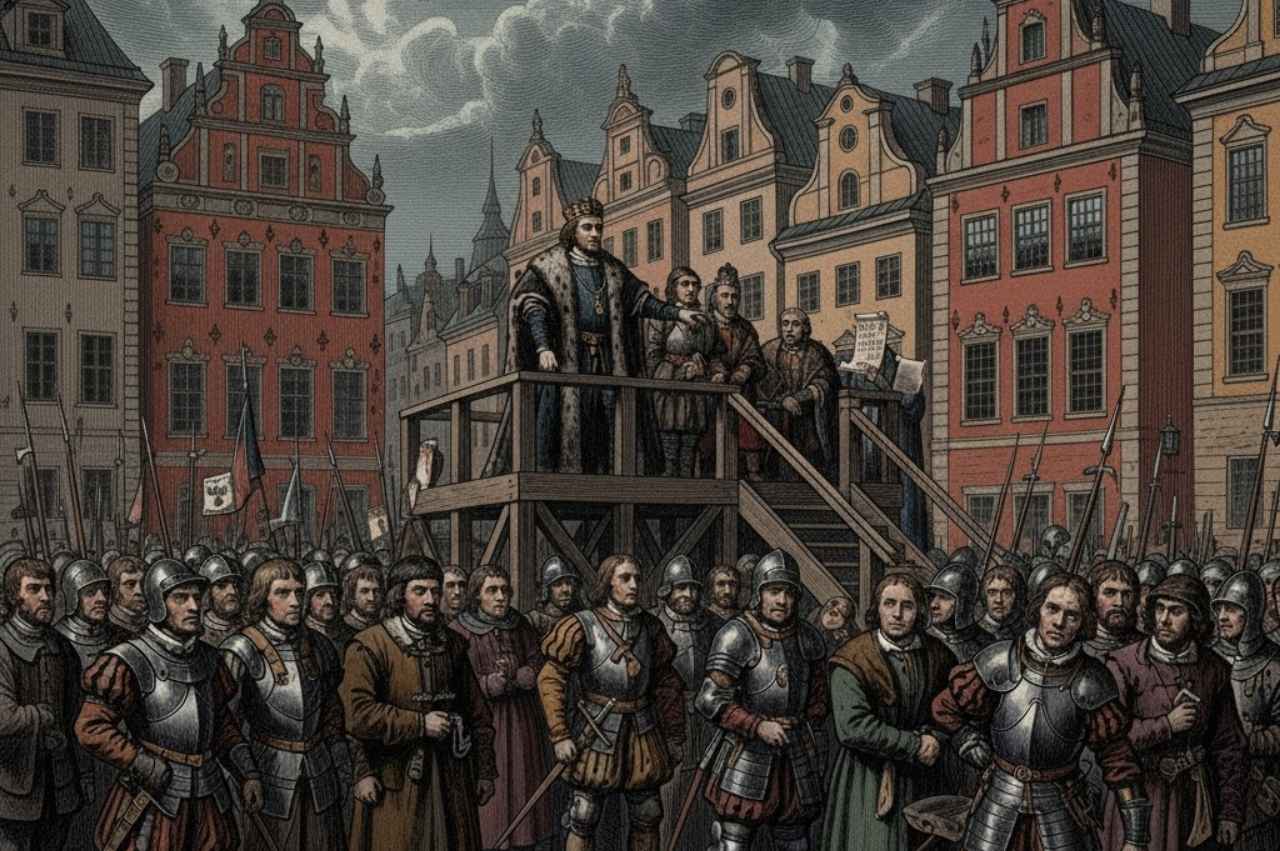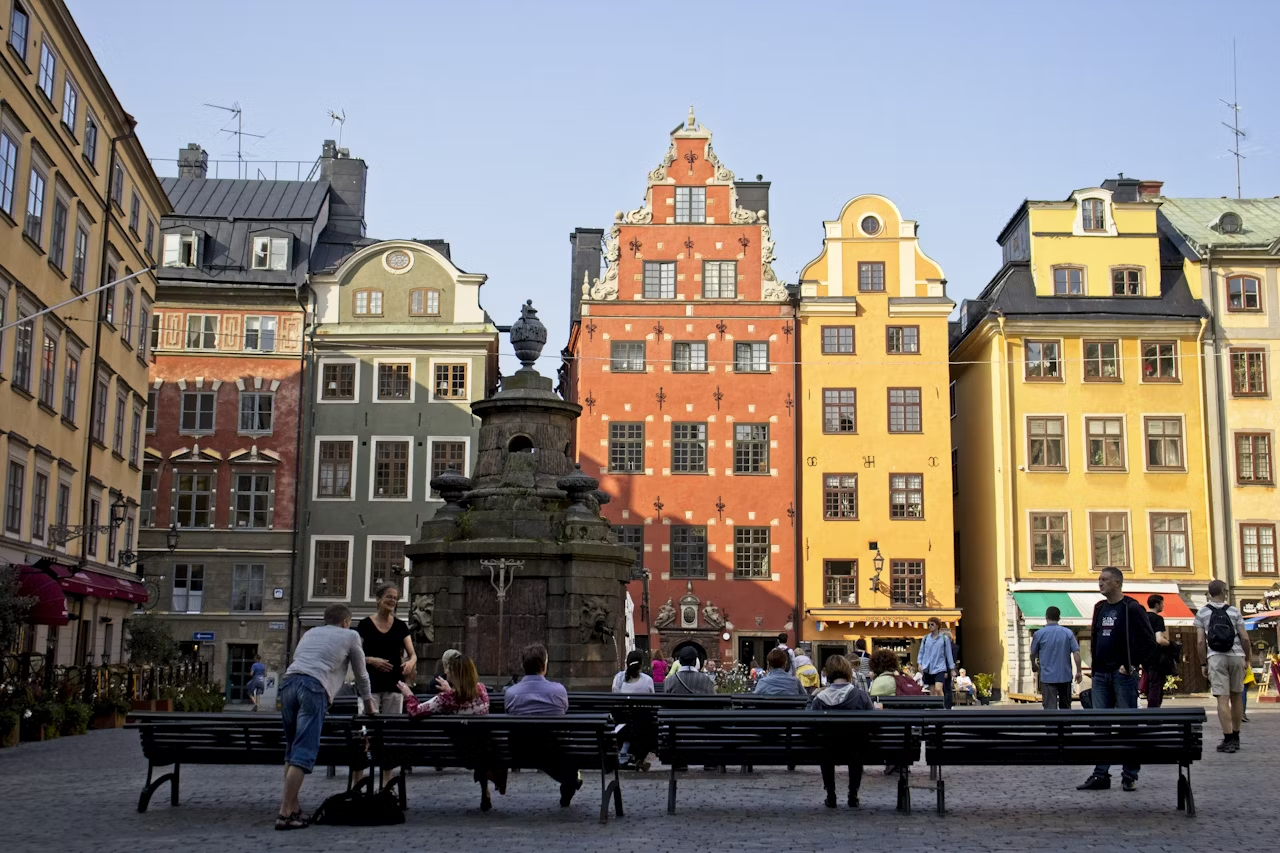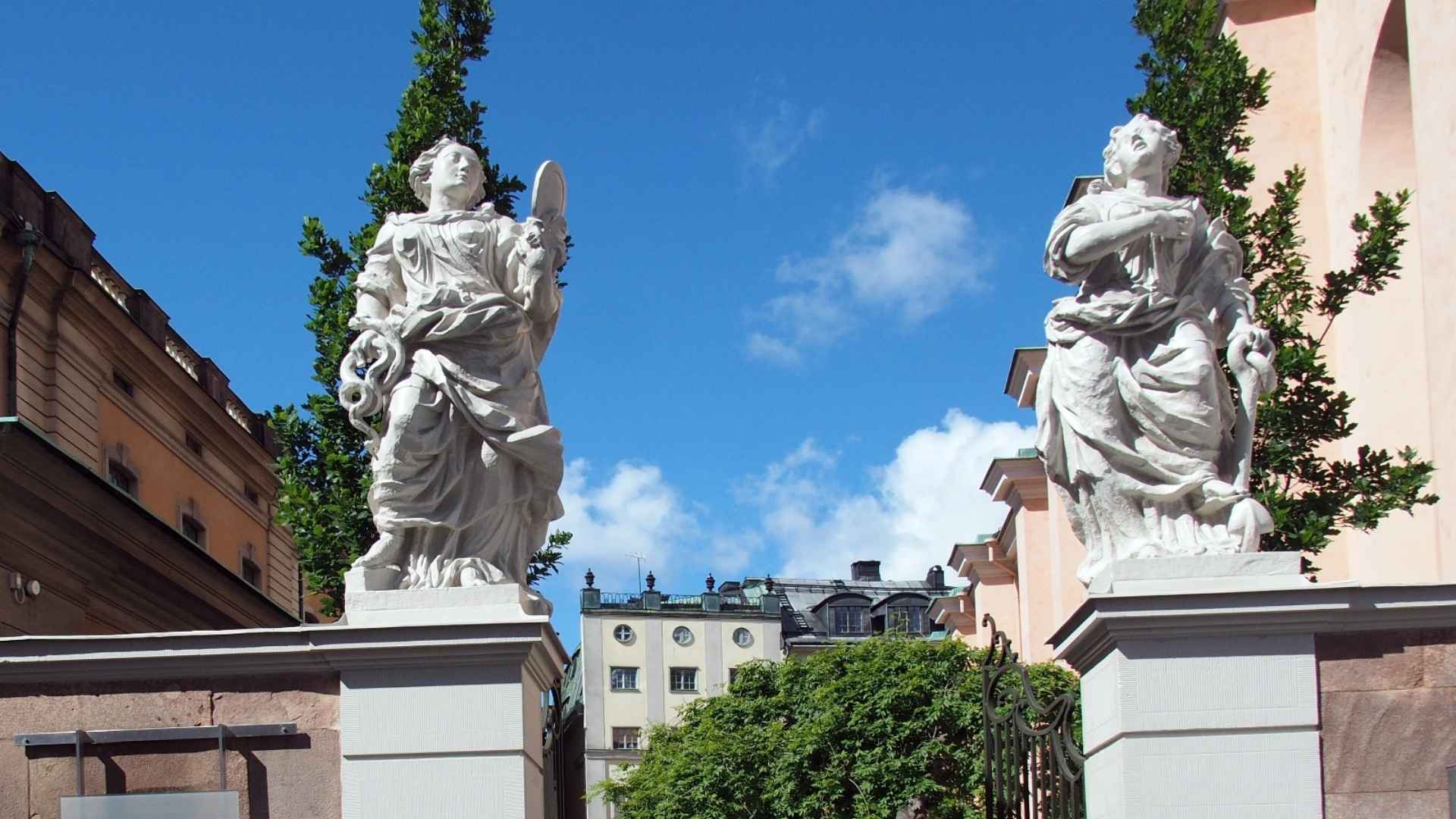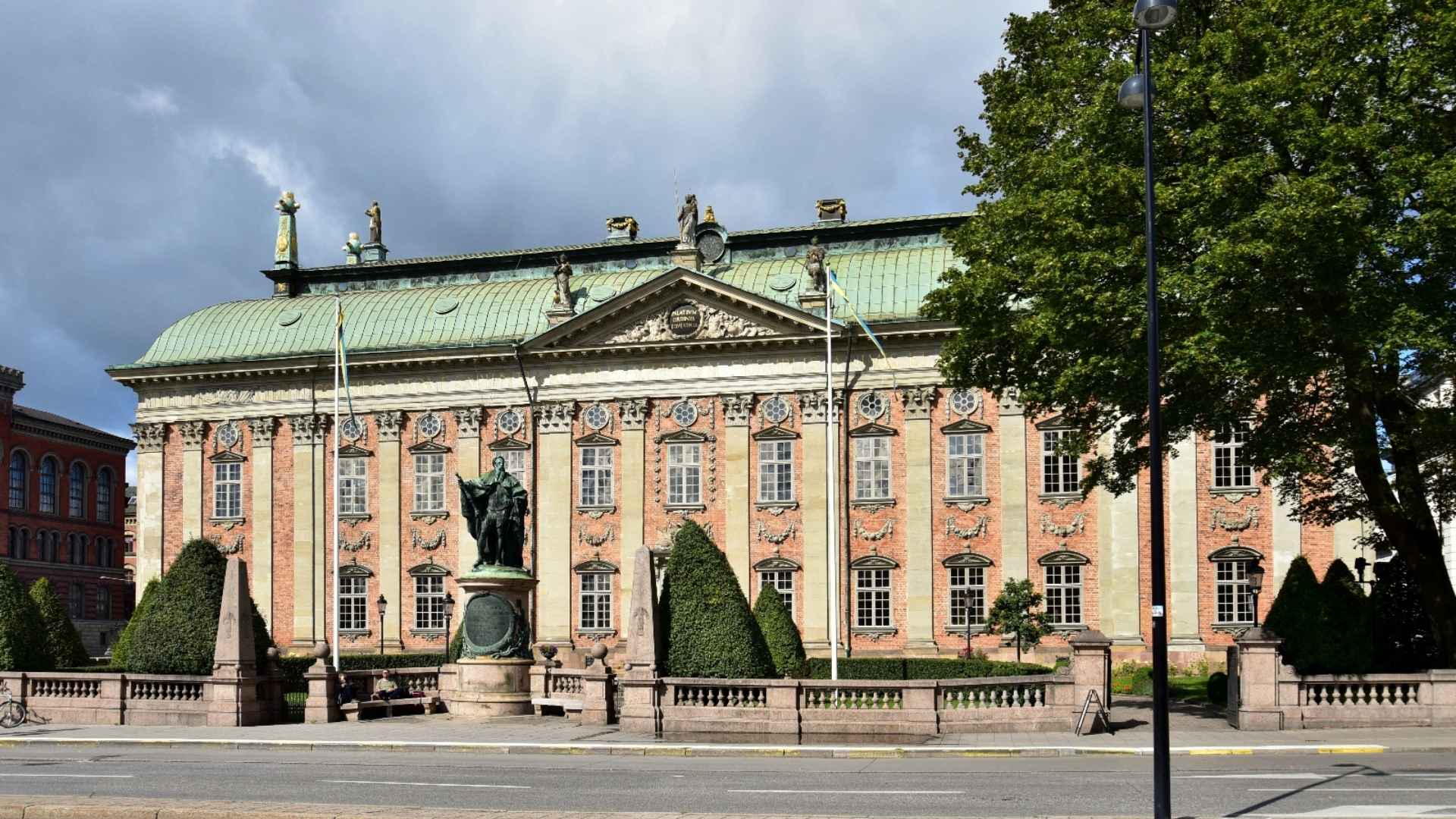TLDR
In November 1520, Danish King Christian II invited Swedish nobles to a peace celebration in Stockholm, then accused them of heresy and executed 82 people over three days.

The Invitation
Christian II of Denmark had a problem. He'd conquered Sweden in 1520, but the Swedish nobility hated him. So he did what any reasonable conqueror would do: he threw a party. A three-day coronation celebration in Stockholm with food, wine, and promises of reconciliation.
The Swedish nobles knew it was risky, but refusing a king's invitation was basically suicide anyway. So they came to Stockholm in November 1520, probably hoping for the best.
They should have trusted their instincts.
The Trap
On November 8, 1520, after days of celebration, Christian II's advisor Jens Beldenak stood up during the festivities and accused several Swedish nobles of heresy. Heresy was the perfect charge because it bypassed normal legal protections.
The Danish king had set an elaborate trap. Archbishop Gustav Trolle, who had his own grudges against Swedish leadership, provided a list of enemies disguised as heretics. Christian II's soldiers surrounded the building. There would be no escape.
The nobles who'd come to Stockholm for reconciliation realized they'd actually come to their own execution. Christian II ordered immediate trials. The trials were formalities. Everyone knew the verdicts before they started.
Three Days of Blood
What happened next turned Stortorget, Stockholm's main square, into an execution ground. Over three days, 82 Swedish nobles, clergy, and prominent citizens were beheaded in the square.
The executions weren't quick military actions. They were public spectacles designed to terrify anyone who might resist Danish rule. Bodies piled up in the square. Blood literally ran through the cobblestones.
Bishop Mattias of Strängnäs was among the victims, along with numerous nobles who'd served Swedish independence movements. Christian II wanted to eliminate Sweden's leadership class entirely. If you'd ever opposed Danish rule, supported Swedish independence, or just made the wrong enemy, you were probably on that list.
The massacre wasn't limited to nobles. Christian II's forces also executed anyone associated with the Swedish independence leader Sten Sture the Younger, who'd died in battle earlier that year. They dug up Sture's body and burned it along with the body of a child from his family, because apparently killing living opponents wasn't enough.
The Aftermath
Christian II expected the Stockholm Bloodbath to crush Swedish resistance. Instead, it ignited rebellion. A young Swedish noble named Gustav Vasa had escaped the massacre by luck or warning. He fled to the Dalarna region and started organizing resistance.
The brutality of the bloodbath gave him the perfect recruitment tool. Every Swedish family that lost someone in Stockholm had reason to join his cause.
Within three years, Gustav Vasa had driven the Danes out of Sweden and became king in 1523. Christian II earned the nickname "Christian the Tyrant" and eventually lost his own throne, spending 27 years as a prisoner. The Stockholm Bloodbath, intended to secure Danish rule, actually ended it forever.
Why It Still Matters

The Stockholm Bloodbath is both a gory history and the founding trauma of modern Sweden. The massacre and subsequent rebellion led to Swedish independence and the Vasa dynasty that ruled for over a century.
It's why Swedish-Danish relations remained poisonous for generations. It's why Swedes celebrate their national day in June, connected to Gustav Vasa's election as king.
The Stockholm Bloodbath shows how quickly political celebration can turn into political murder when power is involved. Christian II's feast-to-massacre strategy wasn't unique in medieval Europe, but its scale and the rebellion it sparked made it historically significant.
Today, you can stand in Stortorget where it happened. The square looks cheerful now with its colorful baroque buildings and tourist cafes. There's no memorial marker, no plaque explaining that 82 people died here.
The square was smaller, dirtier, more medieval. But the cobblestones underneath modern pavement are the same ones that absorbed the blood of 82 people whose executions accidentally created a nation.
That's Stockholm's darkest story, hidden beneath its prettiest square.
How many people died in the Stockholm Bloodbath?
Eighty-two people were executed during the Stockholm Bloodbath over three days in November 1520. The victims included Swedish nobles, bishops, clergy, and prominent citizens. Most were beheaded in Stortorget square.
The exact number varies slightly in historical sources, with some accounts suggesting additional executions happened outside the main square. The death toll was massive for the time and represented a deliberate attempt to eliminate Sweden's leadership class.
Bodies of already-dead opponents were also exhumed and burned, adding to the brutality of Christian II's actions.
Why did the Stockholm Bloodbath happen?
Christian II of Denmark ordered the massacre to eliminate Swedish opposition to Danish rule. After conquering Sweden, he faced resistance from nobles who supported Swedish independence. Archbishop Gustav Trolle provided a list of his enemies, and Christian used heresy charges as legal justification for executions.
The bloodbath was political murder disguised as religious justice. Christian believed that killing Sweden's leadership would crush resistance permanently. The strategy backfired completely, sparking the rebellion that ended Danish control of Sweden. Personal vendettas, political calculation, and religious pretexts combined into one of Scandinavia's darkest moments.
Who was Christian II and what happened to him?
Christian II was King of Denmark, Norway, and Sweden who ordered the Stockholm Bloodbath. He ruled Denmark from 1513 to 1523 and briefly controlled Sweden after military conquest. The bloodbath earned him the nickname "Christian the Tyrant."
The massacre's brutality sparked Swedish rebellion led by Gustav Vasa, who drove Christian out by 1523. Christian also lost Denmark's throne in 1523. He spent his final 27 years imprisoned in Denmark, dying in 1559. His attempt to secure power through mass murder destroyed his reign completely. He's remembered primarily for the Stockholm Bloodbath and subsequent failures.
Where exactly did the executions take place?
The executions happened in Stortorget, Stockholm's main square in Gamla Stan (Old Town). The square served as the city's central marketplace and gathering place. Victims were beheaded publicly over three days, with bodies accumulating in the square. Stortorget still exists today, surrounded by colorful baroque buildings built after the massacre.
The square looks cheerful and touristy now, with no memorial marking what happened there. You can visit freely since it's a public square. The cobblestones are different but the location is identical. Many tourists photograph the square without knowing its dark history.
Can you visit the Stockholm Bloodbath site today?

Yes, Stortorget is a public square you can visit anytime for free. It's in the heart of Gamla Stan, Stockholm's tourist-heavy old town. The colorful buildings surrounding the square date from the 17th-18th centuries, built after the massacre.
There's no memorial or plaque explaining the Stockholm Bloodbath, so most visitors don't realize what happened there. The Nobel Prize Museum sits on the square. Cafes and restaurants line the edges. It's Stockholm's most photographed square, which feels ironic given its history.
The contrast between the cheerful present and brutal past makes visiting Stortorget particularly powerful if you know the story.
Discover Stockholm's Dark History with StoryHunt
Want to explore the dramatic history behind Stockholm's beautiful facades? StoryHunt's Personal Tour Guide creates audio walks through Gamla Stan that reveal the violent, fascinating stories most tourists never hear.
Stand in Stortorget and hear the full story of the Stockholm Bloodbath, discover other medieval scandals, and understand how Sweden's capital was shaped by political intrigue, religious conflict, and brutal power struggles.
The interactive map guides you to the locations where history actually happened. Explore Stockholm's dark side at your own pace.

.webp)











.avif)





